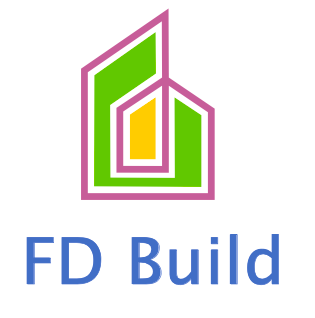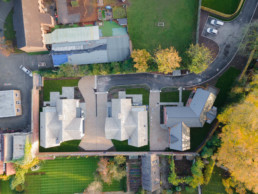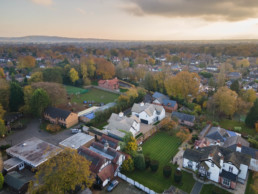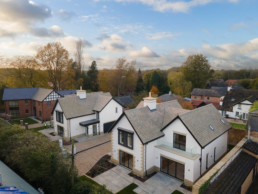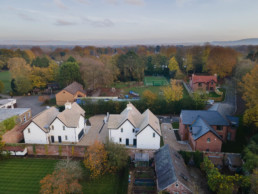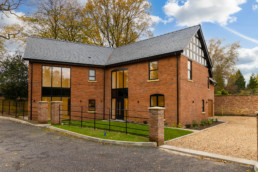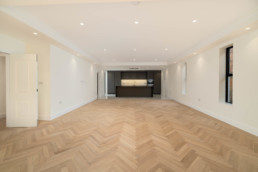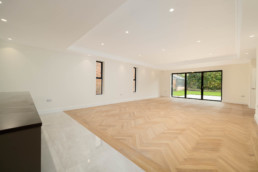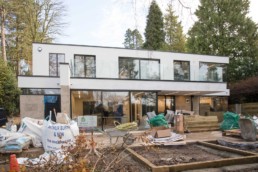The Most Popular Home Styles in UK and Their Unique Characteristics
When it comes to home styles in the UK, there are a wide variety of options to choose from. From traditional to contemporary, each style has its own unique characteristics and features. Here are some of the most popular home styles in the UK and what makes them unique:
- Georgian Homes Georgian homes are characterized by their symmetry and classical proportions. They typically have a rectangular shape, sash windows, and a central front door. These homes are typically constructed with brick or stone and feature a simple, elegant design.
- Victorian Homes Victorian homes are known for their ornate details and intricate designs. These homes are often built with red brick and feature stained glass windows, intricate woodwork, and decorative gables. Victorian homes come in a variety of styles, including Queen Anne, Gothic Revival, and Italianate.
- Edwardian Homes Edwardian homes are similar to Victorian homes but are typically less ornate. They are characterized by their spacious layouts, bay windows, and high ceilings. These homes often feature large gardens and a focus on natural light.
- Art Deco Homes Art Deco homes were popular in the 1920s and 1930s and are known for their geometric shapes, bold colours, and streamlined designs. These homes often feature flat roofs, curved walls, and an emphasis on function over form.
- Modernist Homes Modernist homes are characterized by their simple, clean lines and focus on function over form. These homes often feature large windows, open floor plans, and an emphasis on indoor-outdoor living. They often use industrial materials such as concrete, steel, and glass.
- Cottage Homes Cottage homes are typically small, cosy homes with a thatched roof, exposed beams, and a rustic charm. These homes often feature small gardens and a focus on outdoor living. They are typically found in rural areas and are often used as vacation homes.
- Bungalow Homes Bungalow homes are characterized by their low, horizontal profile and spacious interiors. These homes often feature a front porch, a large living room, and a focus on natural materials such as wood and stone. They are popular with retirees and those looking for a single-level home.
- Terraced Homes Terraced homes are a common sight in urban areas and are typically narrow, multi-story homes that share a wall with their neighbours. They often feature a front garden and a small backyard, and are known for their efficient use of space.
No matter what your personal style or preferences are, there’s a home style in the UK that’s perfect for you. Whether you prefer the elegance of Georgian homes or the modern simplicity of a Modernist home, there’s a style that’s sure to suit your needs. So why not take a closer look at these popular home styles and see which one speaks to you?
10 Creative Ways to Add Value to Your Home Through Renovations
Renovations can be a great way to add value to your home, whether you're planning to sell in the near future or simply want to increase your home's equity. However, not all renovations are created equal, and it's important to choose the right projects that will provide the biggest return on investment. Here are 10 creative ways to add value to your home through renovations.
- Kitchen Remodel: A kitchen remodel is one of the most popular and effective ways to add value to your home. Consider upgrading countertops, cabinets, and appliances for a modern and fresh look.
- Bathroom Remodel: Similar to a kitchen remodel, updating your bathroom can add significant value to your home. Consider upgrading fixtures, flooring, and lighting for a more luxurious feel.
- Add a Deck or Patio: Outdoor living spaces are highly sought after and can provide a great return on investment. Consider adding a deck or patio with comfortable seating and beautiful landscaping for an inviting and relaxing space.
- Finish the Basement: A finished basement can add additional living space and storage to your home. Consider adding a home theater, gym, or additional bedrooms for added functionality.
- Paint the Exterior: A fresh coat of paint can give your home an instant facelift and boost curb appeal. Consider choosing a modern color scheme to update your home's look.
- Update Windows and Doors: Updating your windows and doors can provide a great return on investment by increasing energy efficiency and enhancing your home's appearance.
- Add Crown Molding: Crown molding can add a touch of elegance and sophistication to any room, and can be installed at a relatively low cost.
- Upgrade Lighting: Upgrading your home's lighting can add value by providing better ambiance and energy efficiency. Consider installing dimmer switches, energy-efficient bulbs, and modern fixtures for a sleek and functional look.
- Install Hardwood Flooring: Hardwood flooring is highly sought after by homebuyers and can add significant value to your home. Consider installing hardwood flooring in high-traffic areas for added durability and style.
- Create an Outdoor Kitchen: For those who love to entertain, an outdoor kitchen can be a great investment. Consider adding a grill, mini-fridge, and ample counter space for a functional and fun outdoor living space.
In conclusion, there are many creative ways to add value to your home through renovations. Consider working with a reputable contractor who can help you choose the right projects and materials for your budget and goals. By choosing the right projects, you can not only enhance your home's value but also create a more functional and enjoyable living space for you and your family.
Pros and Cons of Open Floor Plans for Your New Home
Open floor plans have been a popular trend in home design for several years now, and for good reason. They offer a more spacious and airy feel to a home, making it ideal for entertaining and creating a communal space for family and friends. However, as with any design choice, there are both pros and cons to consider when deciding if an open floor plan is right for your new home. In this post, we’ll explore some of the advantages and disadvantages of open floor plans.
Pros:
- Spaciousness: Open floor plans create a more spacious feeling, making smaller homes feel larger and more airy. This can be particularly helpful for those who are downsizing from a larger home.
- Flexibility: Open floor plans provide more flexibility for furniture placement, allowing you to create a more customized layout that fits your lifestyle and preferences.
- Natural Light: An open floor plan often allows for more natural light to enter the home, creating a brighter and more inviting space.
- Social Connection: Open floor plans promote social connection by creating a more communal and inviting space, making it easier to socialize with guests and family members while still being productive in the home.
Cons:
- Noise: With fewer walls, there is less sound insulation between rooms, which can make it harder to create a quiet and peaceful environment for certain activities.
- Privacy: Open floor plans often provide less privacy and may not be ideal for those who value having their own personal space.
- Cost: Open floor plans can be more expensive to build, as they often require larger rooms, more structural support, and more extensive heating and cooling systems.
- Cleaning: An open floor plan often requires more cleaning due to the larger and more open space, which may be less appealing to those who prefer a low-maintenance lifestyle.
In conclusion, open floor plans have both advantages and disadvantages, and the decision to use one should be based on your personal needs and preferences. If you love the idea of a more spacious, flexible, and inviting living space, then an open floor plan may be the perfect fit for you. However, if you prioritize privacy, quiet, and low-maintenance living, then a more traditional floor plan may be a better choice. Regardless of your decision, it’s important to work with a reputable builder who can help you make the right choice for your new home.
Furnished vs. Unfurnished
At FD Build, we take pride in our craftsmanship and attention to detail when building new homes. Check out these 5 photos of a new build house we’ve recently completed, both furnished and unfurnished. From the carefully chosen materials to the precision in our construction, our workmanship speaks for itself.
While the furnished photos showcase the potential of what you could do with a new home, the unfurnished photos allow you to see the bones of the house and appreciate the quality of our work. We believe in giving our customers the flexibility to create the living space that suits their unique style and needs.
Contact us today to learn more about our new build properties and the quality of our craftsmanship. We can’t wait to help you find your dream home!
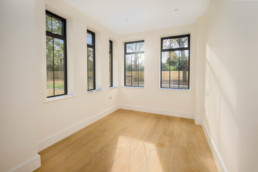






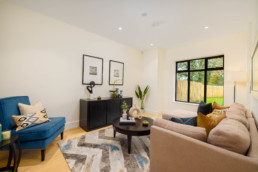
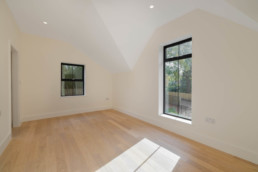
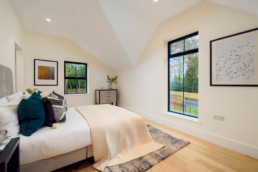
How to Choose the Right Builder for Your New Home
Choosing the right builder is one of the most important decisions you’ll make when building a new home. Your builder will be responsible for turning your vision into a reality, so it’s essential to choose someone who is experienced, reliable, and trustworthy. Here are some tips to help you choose the right builder for your new home:
- Research potential builders Do some research and compile a list of potential builders in your area. Look for builders who have experience in building the type of home you want, and read reviews from previous clients to see how they performed. Ask for references and follow up with those references to get a better idea of the builder’s track record.
- Check credentials and licenses Make sure the builder you choose is licensed and insured. You can usually find this information on the builder’s website or by contacting your state’s licensing board. Also, check if the builder is a member of any professional organizations, which can indicate a commitment to quality and ethical standards.
- Schedule a meeting Schedule a meeting with each builder on your list. Use this opportunity to ask questions and discuss your vision for your new home. A good builder will listen to your needs and ideas, offer suggestions, and provide a clear plan for how they will execute your project.
- Review their previous work Ask to see examples of the builder’s previous work. This will give you a good idea of their style, quality, and attention to detail. If possible, visit some of their completed projects to see the workmanship up close.
- Get a detailed quote Once you’ve narrowed down your list to a few builders, ask each of them for a detailed quote. This should include all costs associated with building your home, including materials, labour, and any additional fees. Make sure you understand what is and isn’t included in the quote, and ask for clarification if anything is unclear.
- Trust your instincts Finally, trust your instincts. If something doesn’t feel right about a particular builder, it’s probably best to move on. Building a home is a significant investment, so you want to make sure you’re working with someone who you feel comfortable with and who you can trust.
Choosing the right builder is essential to ensure that your new home is built to the highest standards and meets your expectations. By doing your research, asking the right questions, and trusting your instincts, you can find a builder who will bring your dream home to life.
